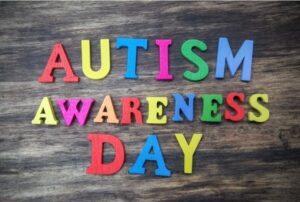Anger is a natural emotion that everyone experiences, including children. However, when left unchecked, anger can lead to problematic behavior, poor decision-making, and strained relationships. For children, anger management is a crucial skill that can benefit them throughout their lives, both at home and at school. As a parent or caregiver, understanding how to help your child manage their anger effectively is essential in fostering emotional intelligence and promoting healthy emotional development.
In this article, we will explore practical strategies and tips to help your child understand, express, and manage their anger in a healthy and constructive way.
1. Understand the Root Causes of Your Child’s Anger
Before you can help your child manage their anger, it’s important to understand why they are angry. Children, especially younger ones, often struggle to identify and articulate their emotions. Anger can be triggered by a variety of factors, including frustration, fear, miscommunication, feeling misunderstood, or even physical discomfort such as hunger or tiredness.
Take the time to observe your child’s behavior and listen to what they have to say. Is their anger a reaction to a specific event, like being told "no" or having their favorite toy taken away? Or is it part of a bigger emotional struggle, such as feeling overwhelmed by schoolwork or a conflict with friends? Understanding the underlying cause of your child’s anger can help you address the root issue and guide them towards healthier emotional regulation.
2. Teach Your Child to Recognize Their Anger
One of the first steps in anger management is teaching your child to recognize when they are becoming angry. Many children may not even realize when their anger is starting to build, which makes it harder for them to take control of the situation before it escalates. By helping your child become aware of the physical and emotional signs of anger, such as clenching fists, raised voice, or tight muscles, you can teach them how to pause and identify their emotions early.
You can create a "feelings chart" with your child, where they can point to different emotions throughout the day. This chart helps children recognize their emotions and builds their emotional vocabulary. The more children learn to identify how they feel, the more empowered they become to take proactive steps to manage those feelings.
3. Teach Healthy Ways to Express Anger
Anger is an emotion that needs to be expressed, but it must be done in a healthy and appropriate manner. It's important to guide your child in learning how to express their anger without resorting to destructive behavior, such as hitting, yelling, or throwing things. Teach them that it's okay to feel angry, but it's not okay to hurt others or themselves when they are angry.
You can teach your child alternative ways to express their anger, such as:
- Using words: Encourage your child to express how they feel by using phrases like, "I’m upset because…" or "I feel angry when…" This helps children communicate their emotions clearly and constructively.
- Physical outlets: Physical activity can be a great way to release pent-up anger. Encourage your child to take a walk, jump on a trampoline, or do some yoga to burn off excess energy and calm down.
- Creative outlets: Art and writing can be powerful tools for emotional expression. Have your child draw pictures, write in a journal, or create something that represents their feelings. This can help them process their anger and release it in a constructive way.
4. Use Time-Outs to Calm Down
Time-outs are often viewed as a punishment, but when used effectively, they can be a tool for anger management. A time-out can provide your child with a quiet space to cool down and reflect before reacting impulsively. Instead of using time-outs as a punishment, frame them as an opportunity for your child to regain control of their emotions.
Teach your child that when they feel their anger rising, they can go to their "calm-down" space—a designated area in your home where they can take deep breaths, relax, and reflect. Use a timer to set a limit on how long they should stay there, usually 5 to 10 minutes. During this time, your child can reflect on what made them angry and think of more appropriate ways to express their feelings.
5. Set a Good Example
Children learn a great deal from observing their parents and caregivers. If you want your child to manage their anger effectively, it’s essential to model healthy emotional regulation. This means demonstrating how to handle frustration and anger calmly and respectfully.
When you’re faced with a frustrating situation, such as a difficult workday or a disagreement, show your child how you manage your own anger. Take a deep breath, use calm words, and walk away from a stressful situation if necessary. By observing your positive example, your child will learn how to respond to their own emotions in a constructive way.
6. Provide Positive Reinforcement
Children thrive on positive reinforcement, and this is especially true when it comes to managing anger. When your child handles a frustrating situation with calmness and maturity, be sure to acknowledge and praise their efforts. Reinforcing positive behavior helps your child build confidence and encourages them to continue using healthy coping strategies.
Make it a habit to praise your child when they use words to express their emotions, take a break to calm down, or show empathy for others during an argument. Praise doesn’t have to be lavish; even small, specific compliments like, "I’m proud of you for using your words instead of yelling" can motivate your child to continue practicing anger management techniques.
7. Seek Professional Help if Needed
If your child’s anger becomes severe or persistent, and it is interfering with their daily life, it may be necessary to seek help from a mental health professional. A child psychologist or counselor can work with your child to develop anger management strategies, improve their emotional regulation, and address any underlying emotional or behavioral issues.
Therapy can be a supportive environment where your child learns to cope with difficult emotions, builds social skills, and learns how to resolve conflicts peacefully.
Conclusion
Helping your child manage their anger is an ongoing process that requires patience, consistency, and understanding. By teaching them to recognize their anger, express it constructively, and use calming strategies, you’re equipping them with valuable life skills that will serve them well into adulthood. With your support, your child can learn to navigate their emotions in a healthy way, fostering stronger relationships and better emotional well-being.













